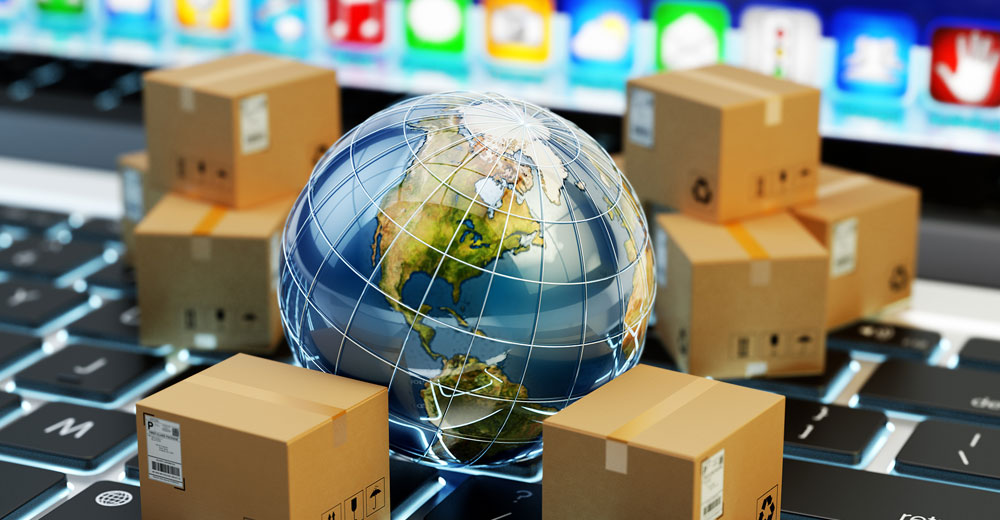It is true that the U.S. economy never has faced the challenges it faces now, but the implications for e-commerce and direct-to-consumers fulfillment functions are particularly significant. This is clearly demonstrated by the federal government’s determination that companies that ship goods directly to people’s homes are an essential service and, as such, are permitted to continue operating.
Responsible continuity and growth involve putting the right measures in place and making decisions that enable you to take a nimble approach to changing circumstances.
This period offers not only challenges but also a unique opportunity for e-commerce businesses to grow significantly by serving consumers’ changing needs. This opportunity for growth is itself challenging in some respects, as keeping afloat during a period of crisis is hard enough, but scaling can be even tougher.
Here are four key strategies to help you survive and thrive in this difficult time.
1. Enforce Guidelines and Support Your Team
Doing the right thing isn’t just good for the employees, customers and the country at large, it’s also good business. The more you can stem the spread of the pandemic, the longer and better you can stay up and running.
It goes without saying that enforcement can protect you from compliance and regulatory issues, but going above and beyond will win you customer and employee loyalty and increased productivity throughout. It’s not just about masks or gloves or disinfectant; it’s also about conversations, financial support, and flexibility.
Moreover it’s not just about how you operate within your own business but how your third-party fulfillment company operates within its business. When your 3PL is up and running and thriving, so are you. Its compliance reduces your risk of downtime, so ask what measures have been put in place.
This uncertain time can cause added worry for the protection and handling of direct-to-consumer brand clients’ products, as well as for people who are responsible for them day-to-day. Knowing that your internal teams, as well as your third-party providers and their teams, are working diligently to maintain a safe and sanitized environment across all facilities will make all the difference.
Here are some things to do to protect and support your people:
- Hire an external company to deep sanitize facilities
- Increase the frequency of cleaning schedules
- Supply PPE (masks and gloves)
- Enforce a six-foot distance rule
- Give complimentary meals to staff at the warehouse
- Allow flexible hours
- Provide paid sick leave
- Give the on-site team a raise during this difficult time
- Restrict nonessential travel
Personal Hygiene and PPE
It’s key to provide and distribute personal protective equipment such as hand sanitizer, masks, gloves, and disinfectant products to all employees and share best practices to prevent the spread of illness. Require your team members to wash their hands regularly and avoid touching their mouths, eyes, or noses. To reinforce the washing of hands, place visible signs in all public spaces within buildings, such as bathrooms and food preparation spaces.
Increased Cleaning
Increase the frequency of routine cleaning and disinfection of all frequently touched surfaces in the workplace, such as workstations, countertops, doorknobs, and restrooms. Provide employees with disposable wipes and gloves so that commonly used surfaces can be wiped down before each use. Additional cleaning shifts can be added to further support operations, and additional cleaning logs should be put in place.
Increased Compensation and Open Dialogue With Teams
Many team members have children at home from school and are finding alternatives to public transportation. To aid in accommodating these new lifestyle changes and thank them for their continued dedication, many companies are offering a 10 percent compensation increase for frontline staff during this global pandemic.
It’s also key to continuously communicate with staff on operational statuses to ensure you are up-to-date on sanitation tasks, employees’ health, and any changes within your operation.
Stay-at-Home Precautions
Enforce with all employees that if they have symptoms of acute respiratory illness, they must stay home and not return until all symptoms have been gone for at least 48 hours without the aid of fever-reducing or symptom-altering medicines.
Restricted Travel
Restrict travel for all employees between locations and ban client visits during this period. Warehouse/location access should be restricted to associates who must carry out physical tasks. No customer support, IT (unless needed), administrative support, or nonessential employees should work on-site unless absolutely necessary.
2. Consider Transitioning to Third-Party Fulfillment
Self-fulfillment always has been a challenging path. It’s never been your core expertise, it’s costly, and it carries lots of fixed expenses in the form of real estate and headcount. Moreover, it’s a huge distraction. Working with a third-party fulfillment company can take a huge burden off your back. Now, in the COVID-19 era, there are even more reasons to make a shift:
- Shifts in demand are even steeper, so a 3PL can give you flexibility in your physical footprint without increasing fixed costs.
- Conditions in various geographies can become very different from time to time.
- Fulfillment companies are themselves firmly designated as essential services and will continue to be. If you have concerns about how your facility will be designated overall, there is great comfort in having your inventory with a 3PL.
- An entity whose sole business is fulfillment will have the focus and designated resources to withstand the regulations and guidelines as they persist and change over time.
Working with a substantive 3PL can give you the opportunity to put inventory in multiple geographies to diversify and reduce risk.
So, what should you look for in a third-party fulfillment company? Look for the following:
- A national footprint — reduce risk and diversify your inventory while getting the best possible pricing and time in transit.
- There is a significant list of integrations. Make sure your 3PL can handle everything you need today and as you evolve. It should also be integrated with all major e-commerce platforms, EDI systems, returns software, order management systems, and ERPs.
- Look for great shipping rates, but don’t go with the cheapest fulfillment services. Be suspicious of pricing that seems too good to be true.
3. Prepare to Scale – Fast
All indicators are that the growth that was predicted to take place for e-commerce over the next few years has been accelerated and compressed into the current months and that, in a post-COVID world, this shift will persist and continue to grow.
Those of us in the fulfillment arena know that now, “Every day is Cyber Monday.” People all over the world are at home shopping online for all of their needs.
Find a fulfillment provider that thrives with sudden growth.
Even in normal times, digitally driven companies such as direct-to-consumer brands do not grow linearly; rather, they grow in a “hockey-stick” curve pattern. That always has been difficult from the fulfillment standpoint.
It’s clear why that’s difficult for self-fulfilling brands — after all, this is a capital investment. It is a heavy undertaking, to begin with, and expanding suddenly is costly and difficult. What is just as problematic is that many fulfillment companies also break when their customers suddenly scale.
They, too, have grave difficulty scaling. Look for a 3PL that specializes in scaling with its customers. Ask for specific examples of how it handles sudden growth, and be clear that you expect this to happen. If the company is just OK at it, keep looking. One of the worst things that can happen is you suddenly find great success, and your fulfillment system fails you.
4. Be a Real Partner With Your Fulfillment Provider
The e-commerce company/fulfillment company relationship is unlike most client/provider relationships in that the integration and collaboration between both sides of this equation translates directly into increased success.
The more information, data and forecasts you can provide to your 3PL partner, the better it can provide excellence at scale for you. E-commerce is a complex ecosystem, and aside from the development and production of the brand’s product itself, fulfillment is the single most important “real-world” manifestation of the brand, so make it a true partnership.














































Social Media
See all Social Media